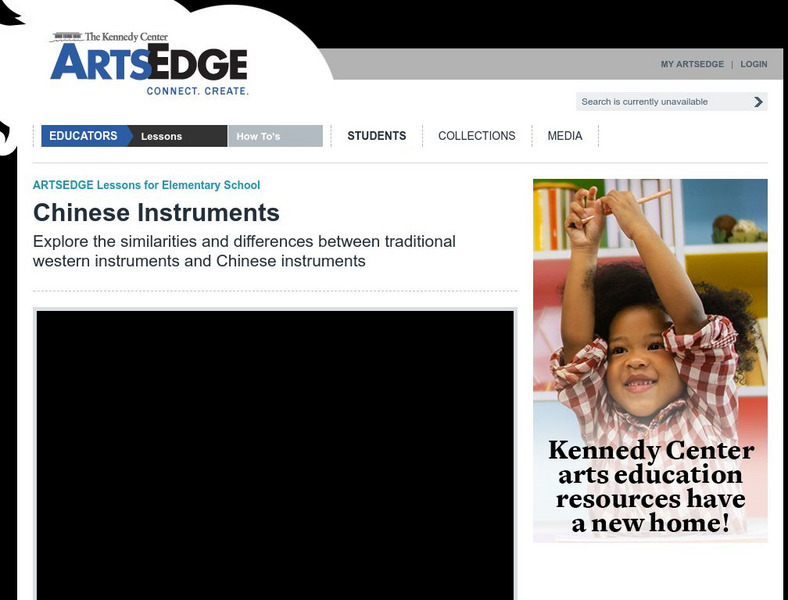Curated OER
Our State Road Trip
Young scholars take a virtual tour of the country of China instead of a state. Using the Internet, they examine the differences between a political and physical map and use latitude and longitude to locate specific places. They also...
Curated OER
Bronze Bells
Students explore an amazing technological advancement in ancient China, zhong
bells, as an example of the use of natural resources and human ingenuity to meet a need and to add value to the quality of life in an ancient time.
Curated OER
Dialogue: Languagae Learning
In this dialogue about language learning worksheet, students read questions and answers concerning learning various languages.
Curated OER
The Four Religions of East Asia
Students compare and contrast the four main religions of Asia (Buddhism
Confucianism, Daoism, and Shinto). This lesson is intended for use in the middle school Social Studies classroom.
Curated OER
New Year Celebrations
Students study the universality of many New Year celebrations. They present traditions associated with New Year celebrations and explain why New Year is at different times for different people.
Curated OER
Translating Traditions
Students analyze art reflective of traditions and cultural heritage. In this art analysis lesson, students complete image based discussion.
Curated OER
Competing National Stories in Tibet
Pupils research the Tibetan conflict from the point of view of both Tibet and China. They review resources produced by both factions and then apply these skills to consider other competing national stories.
Curated OER
What's Next for China and the US?
Tenth graders assist President Bush in researching and writing a 2-page report on China, including any economic and political changes that have significantly affected the country within the last 50 years.
Curated OER
Playing the Part of the Potter
Young scholars identify and define horror vacui (fear of empty spaces) and create their own pinch pot vessels with no empty spaces.
Curated OER
"The Universal Principal of Change"
Twelfth graders research the Kamakura Period, along with Confucian, Taoist, and Buddhist principles. Also, they study Yoshida Kenko.
Curated OER
Asian Museum Exhibit
Seventh graders role play the role of a curator of a local museum. In groups, they develop a new exhibit on Asia. They research specific countries in Southeast Asia and present their exhibit to the class. Art must also be included in...
Curated OER
The Importance of Trade
Students discuss how trade affects the products they use everyday. In groups, they identify the clothes they are wearing, the food they eat most often and the cars their families drive. Using the internet, they research how these goods...
Curated OER
Non-British Surnames
Students investigate some of the common characteristics of surnames around the world. They also examine some of the unique characteristics of surnames in different countries. The lesson finds its context with the help of guiding questions.
Annenberg Foundation
Annenberg Learner: Bridging World History: Food, Demographics, and Culture
This unit probes into the role food plays in society in terms of culture, economy and global awareness since the primary globalization in the 1500s through videos, various readings, and activities.
Stanford University
Stanford History Education Group: China's Cultural Revolution
[Free Registration/Login Required] A lesson plan inspiring students to consider what it was like during the Cultural Revolution prompted by Mao Tse-Tung in the 1960's through primary source documents.
John F. Kennedy Center
The Kennedy Center: Chinese Calligraphy & Ink Painting
Students explore Chinese culture while creating unique pieces of calligraphy with watercolor paint. This two-part lesson plan includes an assessment rubric and a list of sources to use as a reference.
PBS
Pbs Learning Media: Math + Arts: Chinese Music & Dance: More or Less
Students learn about Chinese culture and the concept of greater than and less than. After watching a student performance of a Chinese song and dance students are taught the difference between locomotor and non-locomotor motions. Students...
John F. Kennedy Center
The Kennedy Center: Chinese Instruments
Help your students identify and classify Western instruments and traditional Chinese instruments.
National Endowment for the Humanities
Neh: Edsit Ement: Marco Polo Takes a Trip
After completing this 9-12 instructional activity unit, students will be able to identify Marco Polo and understand why he took his trip to China and back. They will discover the challenges of traveling along the Silk Road while learning...
University of Illinois
University of Illinois: Chinese Experience in 19th Century America
Extensive multi-lesson teaching unit focuses on the Chinese immigrant experience in the late 19th century.
National Endowment for the Humanities
Neh: Edsit Ement: Animals of the Chinese Zodiac
This site from EDSITEment provides a fun look at the Chinese culture by examining the animals of the Chinese Zodiac and the traits of the Chinese calendar.
National Humanities Center
National Humanities Center: America in Class: The Chinese Question From a Chinese Standpoint, 1873
Lesson on how the Chinese in California confronted anti-Chinese sentiment and discrimination in the late 1800s. Comprehensive lesson plan with primary source materials.
Annenberg Foundation
Annenberg Learner: China Through Mapping
In this instructional activity, Mimi Norton integrates world geography with the study of Chinese culture and history by engaging her young students in a variety of activities to locate natural and human-made landmarks on maps of China....
Crayola
Crayola Asian Landscape Scroll
Here's a lesson plan for students of any age! Children use Chinese scroll painting as inspiration to create their own version of this ancient art form. Provides resources and adaptations as well. You need to register to view the page,...





















